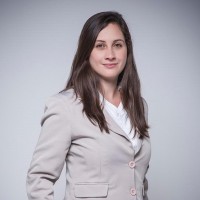The Federal Reserve (Fed) on Wednesday raised the federal funds rate by another 75 basis points, to 2.25%-2.50%, delivering what was expected by most investors and economists in recent weeks.
Designed to control persistent inflation, the decision comes amid slowing home sale velocity, as the housing sector is particularly interest-rate sensitive.
“Recent indicators of spending and production have softened. Nonetheless, job gains have been robust in recent months, and the unemployment rate has remained low,” the Federal Open Markets Committee said in a statement Wednesday afternoon.
To stimulate economic activity during the COVID-19 pandemic, the Fed maintained the federal funds’ rates at 0%-0.25% between March 2020 and March 2022, when it started a tightening monetary policy to slow inflation.
So far, it has resulted in a cumulative 225 bps hike: 25 bps in March, 50 bps in May, 75 bps in June, a hike not seen since 1994, and today’s 75 bps.
It brought rates back to the level of December 2018 – and marked an end to the easy money that gave rise to the hottest mortgage market in U.S. history.
Prioritizing home equity solutions in a rising rate environment
The 2022 housing market has been underscored by interest rate spikes and refi decline and lenders are working hard to adjust to new borrower trends. HousingWire recently spoke with Barry Coffin about the ways lenders can capitalize on these trends by revving up their home equity solutions.
Presented by: ServiceLink
Surging prices drive the Fed. Inflation in the U.S. hit 9.1% in June, the highest level in 40 years, the Bureau of Labor Statistics reported on July 13. By then, the news raised the specter that the Fed would raise the benchmark rate by 75 or even 100 basis points today.
“Inflation remains elevated, reflecting supply and demand imbalances related to the pandemic, higher food and energy prices, and broader price pressures,” the FOMC said. “Russia’s war against Ukraine is causing tremendous human and economic hardship. The war and related events are creating additional upward pressure on inflation and are weighing on global economic activity.”
On Thursday, gross domestic product data will be released, and observers believe it will show that the U.S. economy grew marginally or shrank again in the second quarter, which many economists say officially marks a recession. The Biden administration has argued that two consecutive quarters of negative GDP does not constitute a recession.
Fed Chairman Jerome Powell echoed the administration’s talking points during a news conference following the committee meeting. “I do not think the U.S. is currently in a recession, and the reason is too many areas of the economy are performing,” he said, citing the strong labor market as an example. According to Powell, the Fed is trying to do “just the right amount (of interest hikes). We’re not trying to have a recession.”
Looking forward, Powell said the pace of new rate hikes will continue to depend on the incoming data and evolving outlook for the economy as “these are not normal times and there’s significantly more uncertainty now.”
“While another unusually large increase could be appropriate at our next meeting, that’s a decision that will depend on the data we get between now and then,” Powell said.
In the housing market, the tightening monetary policy has brought volatility to mortgage rates. According to the latest MMS survey from Freddie Mac, after jumping 20 basis points in the previous week to 5.50%, purchase mortgage rates increased last week to 5.54%.
This has reduced the number of sales and cooled housing prices.
Sales of new single-family houses in June fell 8.1% from May, to 590,000 at a seasonally adjusted annual rate, the U.S. Census Bureau and the Department of Housing and Urban Development reported on Tuesday. Pending home sales also fell 8.6% in June from the prior month, according to data released by the National Association of Realtors on Wednesday.
Although price cuts and contract cancelations are increasing, home prices have remained stubbornly high in housing markets across the country.
“Affordability is the biggest issue in the housing market today, and higher rates will make that worse on a monthly basis, even as the Fed does the important work of slowing down price growth,” said Skylar Olsen, Zillow’s chief economist, in a statement.
“Because the housing sector is particularly interest-rate sensitive, it is one of the primary levers through which tighter monetary policy can slow economic activity,” Doug Duncan, chief economist at Fannie Mae, said in a statement. “We continue to forecast slowing home sales through the rest of the year as the Fed continues to raise interest rates and run off its balance sheet.”






